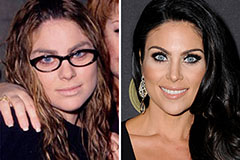Dressing well is a art that transcends mere clothing selection. It's about expressing your personal style while communicating confidence and elegance. A carefully curated wardrobe, balanced by the ideal accessories, can have a remarkable impact on how you present yourself to the world. It's about celebrating your individuality while observing the principles of style and harmony. Ultimately, dressing well is a journey of self-discovery, one that allows you to highlight your unique flair.
A Guide to Choosing Dress
Embarking on a quest for the ideal dress can be an exciting yet daunting task. With so many designs available, it's easy to feel overwhelmed. However, this guide will equip you with the essential tips and tricks to successfully navigate the world of dresses and discover the absolute that speaks to your unique taste.
- First determining the occasion. Is it a formal event, a casual gathering, or something in between? The setting will heavily affect your dress choice.
- Next, think about your body shape. Different cuts compliment different body types.
- Finally, Try on a variety of styles and colors.
Always consider that the most important thing is to opt for a dress that makes you look and feel your best.
Fashion Trends in Dresses dominate
This cycle, the world of dresses is brimming with bold trends. A-line silhouettes continue to be popular, often crafted from soft fabrics like chiffon and silk. A revival of classic styles is also in full swing, with flapper waistlines making a dramatic comeback.
For those seeking a more modern look, sharp dresses with bold color blocks and unique prints are making waves. Jewelry play a key role in completing these website looks, with chunky platforms adding an element of attitude.
No matter your personal style, there's a dress trend to suit every taste this season. From rustic patterns to sophisticated silhouettes, the possibilities are truly endless.
Dresses Through the Ages
Throughout the course of centuries, dresses have evolved dramatically, showing the cultural norms and artistic trends of each age. From the ample gowns of ancient civilizations to the fitted silhouettes of the Victorian time, dresses have always been a representation of femininity and status.
Throughout the 20th century, dresses adopted change with the coming of new fabrics like nylon and designs that were more practical. The shorter hemline of the 1960s and the bohemian styles of the 1970s displayed the freedom of women.
- Contemporary dresses continue to change, showing the range of individuality.
Eco-Conscious Sewing
In the realm of fashion, embracing/adopting/implementing sustainable dressmaking practices has become increasingly crucial. This involves selecting/choosing/utilizing eco-friendly materials like organic cotton or recycled fabrics, minimizing textile waste through careful pattern cutting and efficient/optimized/strategic use of fabric scraps. Furthermore, supporting/patronizing/encouraging ethical labor conditions throughout the production process is paramount to achieving/realizing/attaining truly sustainable garment creation. By integrating/incorporating/embracing these principles, dressmakers can contribute to a more eco-conscious/environmentally friendly/sustainable fashion industry.
A Look At Of Wearing A Dress
Putting on a dress can be more than just a sartorial choice. It signifies a range of feelings and can deeply influence our outlook of ourselves and the world around us. Psychologists believe that dresses can tap into deeply intrinsic aspects of our being.
For some, a dress suggests feelings of femininity, while others relate it comforting. The texture of the dress, its color, and even its shape can contribute to these perceptions.
- Moreover, cultural traditions also play a major role in shaping our view of dresses.
- In some cultures, dresses are seen as symbols of beauty, while in others they may be connected more formal occasions.
Ultimately, the psychology of wearing a dress is a intricate one, shaped by a combination of individual and cultural factors.
 Luke Perry Then & Now!
Luke Perry Then & Now! Spencer Elden Then & Now!
Spencer Elden Then & Now! Anna Chlumsky Then & Now!
Anna Chlumsky Then & Now! Nadia Bjorlin Then & Now!
Nadia Bjorlin Then & Now! Stephen Hawking Then & Now!
Stephen Hawking Then & Now!